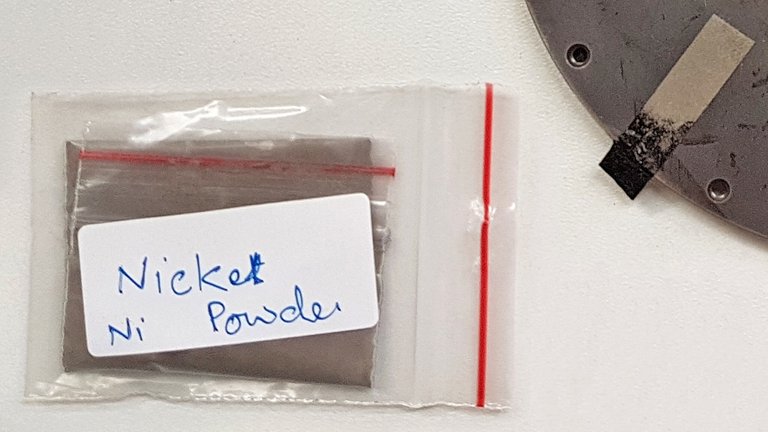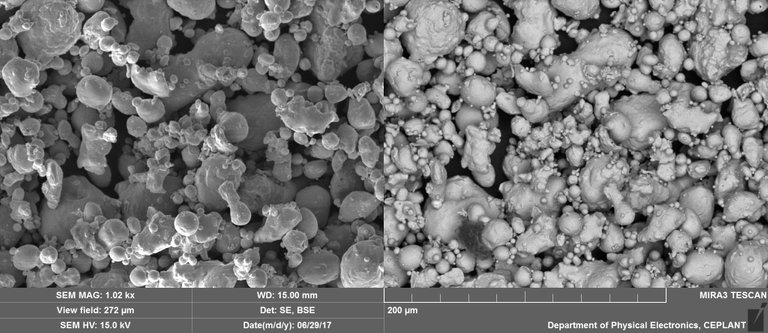Much discussion has been had about the necessary size and purity needed for Nickel in various New Fire reactors. Typically, researchers have used Carbonyl Nickel (like this one as used by Alexander Parkhomov), this has a floret, spike/crevice like appearance, so one may wonder if Suhas Ralkar is using a similar Nickel in his 'ECCO' reactor. Well, we now have the answer.
The Nickel powder, thought to be around 40 um was placed on a piece of carbon tape, that was then attached to the SEM table.

Under the microscope

The actual size of the particles was found to be spread over a very wide range from 1 to 100 microns, so was the quoted 40um from the manufacturer an average? Also, they are clearly either spheroid or globular in nature which means they are unlikely to be produced by the Mond process that results in Carbonyl Nickel. The type of nickel that Suhas is using as feedstock for his ultrasonic fuel processor appears to be closer the sort that is used for metal injection moulding.
Elemental composition

Conclusion
The nickel seems pure, even its surface structure is not so interesting. During the ultrasonic processing, one might imagine the average particle size might change, certainly, when ultrasonic sieving is used to select for particles under 5um, it is easy to see that a good mass of this powder would be lost, if it was not reduced in size.
If you want to be automatically notified as soon as a new blogpost is made, please follow. Also, please up vote and re-steem the article as it will help get exposure for the New Fire. If you are here just browsing, you really should get a steemit account, as it is the fastest way to responsive, advertising free blogging and you can earn real money by helping to build the network - you can also earn money for just commenting on another contributors blog, the secret is, write quality content and comments and then others will up vote you.
Is this an ultrasonic treated material?thank u
No, this is the raw material as supplied before any processing.
It is strange that he nickel powder color is different.Nickel powder in the picture looks is not black.
Perhaps because is not Mond process Carbonyl Nickel, that is to say, it does to have deep light absorbing crevices, but is, as you can see from the SEM, extremely smooth and spherical. In this form, one might expect particles to act in a specular fashion. The photo is taken with a smart phone in HDR mode with light glancing off these spheres into the lense, also, the S7 has a very aggressive noise reduction algorithm which makes things like dust a bit mushy.
In future will try to take with Canon 7D with a bright lense. Will try to take more photos when the radiographic plates have been exposed.